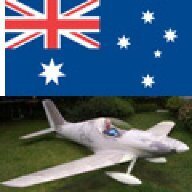Actually there are numerous disadvantages to using these type of cable.
First off yes, they are technically a cable, so work best in tension.
This is where they work well in being able to go around corners simply without pulleys, guides and fairleads, and pull on a control surface.
However, ALL control systems work on the concept of moving something at one point relative to a fixed point (usually the airframe), to transmit motion to another point (a moving surface) relative to a second FIXED point.
The fixed points on a Flexdrive control system, are the ends of the outer housing.
The outer housing needs to be firmly attached to the primary structure without any body flex, although this could also be said for all other control systems
Another problem is that the cable within is not under tension at a neutral position, and must change from a tension load to a compressive load in use.
The clearances allowing the cable to move within the outer housing must be taken up, before any continuation of movement between tension and compression can begin.
This 'taken up' is called hysteresis, which is a technical term for 'slop'.
The minimum slop occurs when the cable is dead straight (sort of, *explained later), every bend added after that induces a small amount of slop, the more bends, the more slop.
Some designers try to get around this problem by pushing the neutral point away from the centre of travel.
How?
Usually by fitting a fixed trim tab to over apply a load in one direction at one end, then a counter spring/bungee to pull the control system the other way at the other end.
Example; Jabiru use small fixed tabs on the elevator that try to hold the elevator in an upward position, then when in cruising flight the trim system needs to be pushed slightly further forward, thus supposedly applying a counter load to the control system.
Unfortunately, the trim system is on the elevator horn at the back, thereby applying a preload to the elevator, and dampening most flutter tendencies, but not doing a lot to remove the slop from the stick, although it is not very noticeable due to the clunking play in the springs in the trim mechanics.
*The slop mentioned earlier, even in straight cables, comes from the tendency of the inner cable (which is often just a single heavy wire!), to coil down it's length inside the outer housing.
This has two effects; as the control system is made longer, there is more cable length to coil thus showing more slop between tension and compression, and having the full length of the internal wire in contact with the entire internal length of the outer, is creating more drag on the system.
Sure, they advertise that the system runs stainless steel cable/wire (smooth?) in teflon liners (low friction), but the fact of the matter is, if you want to move the top of the stick a quarter of an inch, the stick is six inches long, and the flex cable is attached one and a half inches from the pivot point, you can find yourself moving the stick a quarter of an inch, just to take up the slop, before getting to move the stick the quarter of an inch you wanted
Many years back, I was involved with building the Sadler Vampires.
The Vampire uses all Flexdrive cables, and the slop problem was known back then.
Having a nearly twelve inch stick, the free-play was alleviated in the elevator system by having two parallel cables which, when installed were adjusted to have one cable slightly longer than the other (one ball joint was turned half a turn in, the other half a turn out) to create a preload in the system.
It added a small bit of drag to the system, but removed nearly all the free-play.
The ailerons, unfortunately, were (like the Jabiru) driven to a horn on the top, so felt reasonably free sitting on the ground, but once in flight gained a little drag, and had a bit of slop
Some of the control drag was negated by the two stroke engine vibrating everything, making the cables 'float' in their outer housings, giving the impression of reasonably light controls.
One of our test Vampires was modified to have belcranks fitted in the wings to drive pushrods to the ailerons such that, the cable was now connected in tension.
This aircraft had much more precise roll control, and a bit lighter.
Bottom line, I'm not a fan of Flex cables, and think they're best left on agricultural machinery and/or small outboard runabouts.
OK, flame suit on, AGAIN




